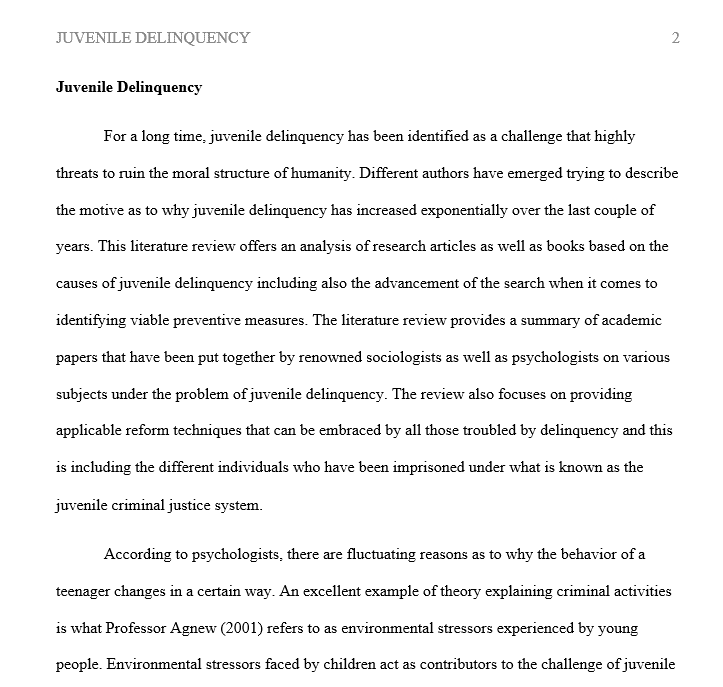Using your annotated bibliography from Week 2, conduct a literature review of your selected sources.
Literature Review
Using your annotated bibliography from Week 2, write a literature review of 3–4 pages. Many peer-reviewed academic journal articles contain a literature review section. Research to find and read several of these.
The literature review is not a listing of abstracts or simple paraphrasing. If your introduction and literature review are combined, ensure that each specific point in establishing the importance of your topic is supported by citations of proper sources. The points you are emphasizing are a reflection of the research and findings that you have developed around your chosen topic. Your ultimate paper is your own unique perspective, and in the literature review you are assembling related research to support your own work.
Assignment Guidelines
Using your annotated bibliography from Week 2, conduct a literature review of your selected sources.
Your literature review should be 3–4 pages in length.
Remember to use APA style for all references and citations.
uvenile Delinquency: Annotated Bibliography
Agnew, R. (2001). Building on the foundation of general strain theory: Specifying the types of strain most likely to lead to crime and delinquency. Journal of Research in Crime and Delinquency, 38(4), 319-361.
In this research, Agnew (2001) ex
Carney, M. M., & Buttell, F. (2003). Reducing juvenile recidivism: Evaluating the wraparound services model. Research on Social Work Practice, 13(5), 551-568.
Using an analysis of cases involving juvenile offenders and the consequent activities in which the individuals engaged following their court proceedings, the researchers herein determined the effectiveness of wraparound services intended to address cases of delinquency in the society. The primary strength of the research lies in the organization of the study, in which case the audience can easily relate and understand the conclusions drawn in the research. Ultimately, the scholars determine that there was need for an improvement in the quality of services related to follow up of cases involving juvenile delinquency, to effectively aid in addressing the factors that lead to their delinquent behavior.
Cullen, F. T., Unnever, J. D., Hartman, J. L., Turner, M. G., & Agnew, R. (2008). Gender, bullying victimization, and juvenile delinquency: A test of general strain theory. Victims and Offenders, 3(4), 346-364.
In this case, the scholars use
Fagan, A. A. (2013). Family‐focused interventions to prevent juvenile delinquency: A case where science and policy can find common ground. Criminology & Public Policy, 12(4), 617-650.
Fagan (2013) builds on the research on the importance of a wraparound approach in pr
Icli, T. G., & Çoban, S. (2012). A study on the effects of family and delinquent peers on juvenile delinquency in Turkey.Advances in Applied Sociology, 2(01), 66-72.
Based on responses from more than 1500 responses from juveniles in Turkey, the research herein confirms the importance of family in addressing issues experienced by juveniles, leading to engagement in delinquent behavior. The study’s use of firsthand information from individuals likely to be victims of delinquent behavior makes it especially effective in the study of delinquent activities in which young people in the contemporary society engage. Ultimately, the research expounds on the importance of using wraparound approaches in dealing with the issue as it highlights the important role played by the household in influencing juvenile delinquency.
Katsiyannis, A., Ryan, J. B., Zhang, D., & Spann, A. (2008).Juvenile delinquency and recidivism: The impact of academic achievement. Reading & Writing Quarterly, 24(2), 177-196.
The school forms one of the primary epicenters of juve
Solution preview for the order on Using your annotated bibliography from Week 2, conduct a literature review of your selected sources.
APA
1147 words
